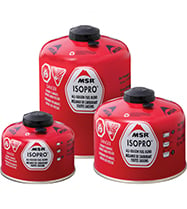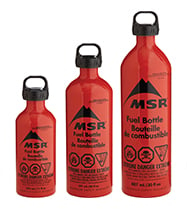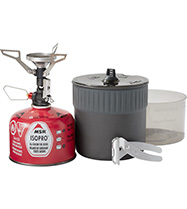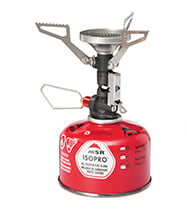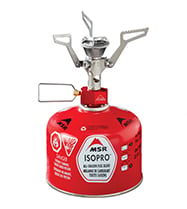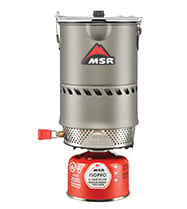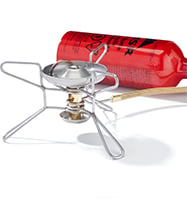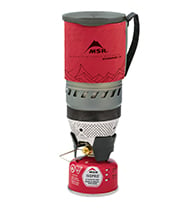The Ultimate Guide to MSR Fuel
You’re psyched. You just bought an MSR® camp stove—the undisputed gold standard for everything from expeditions and extended road trips to casual backpacks and a weekend of family camping. In that process, you likely considered what type of fuel you wanted your new stove to use: liquid fuel or canister fuel. Now that you’ve made that primary choice, you may find yourself wondering a host of questions, from finding compatible fuel away from home to basic use tips to make the most of your stove or stove system. So, here’s a soup-to-nuts compendium of the most common questions we receive about MSR fuel to keep you going no matter where you want to be.
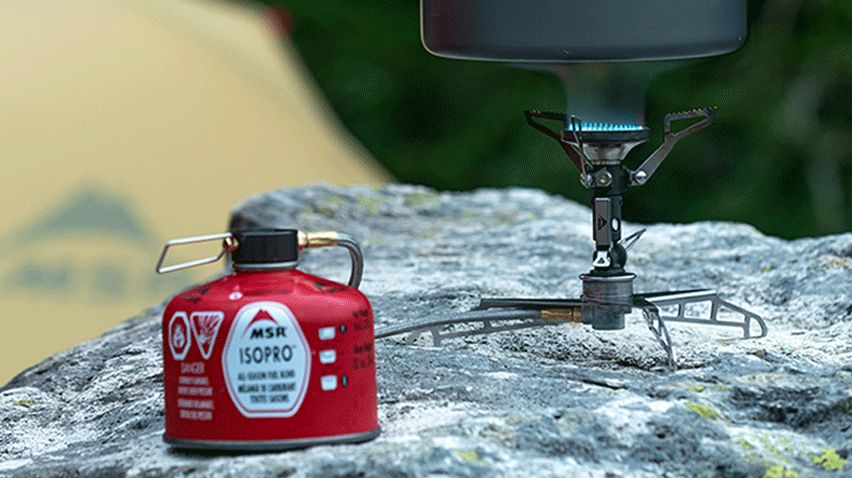
What is MSR IsoPro™ Fuel?
MSR IsoPro fuel is the magic sauce inside our fuel canisters. IsoPro is a special formulation of two fuels (propane and isobutane) that creates the most efficient balance of lightweight portability and cold-weather performance.
That perfect mix is all about pressure because your canister stove requires the fuel to vaporize—something that happens during “phase change” from a liquid to a gas—the same thing that happens when you boil water and it turns into steam.
Fortunately, the sea level boiling point of the most common canister fuels is well below the too-hot-to-handle 212°F/100°C of water. In fact, you want the lowest boiling point possible for your fuel to get plenty of high-pressure vapor—even in cold conditions. The best camp fuel for that is propane, with a boiling point of -44°F/-42°C. Even on below-freezing mornings, propane wants to boil up a storm, but that means it requires some burly (read: heavy) canisters to safely contain all that high-pressure gas. With IsoPro, we intentionally mellow that volatility out by adding just the right percentage (80%, to be exact) of isobutane that has a sea-level boiling point of 11°F/-12°C. This takes the action inside the canister while you’re using your stove down to a nice simmer, allowing it to be safely contained in a much lighter canister while still allowing the mix to deliver excellent performance in the widest range of conditions possible. You can take a deeper dive into the science of all that here.
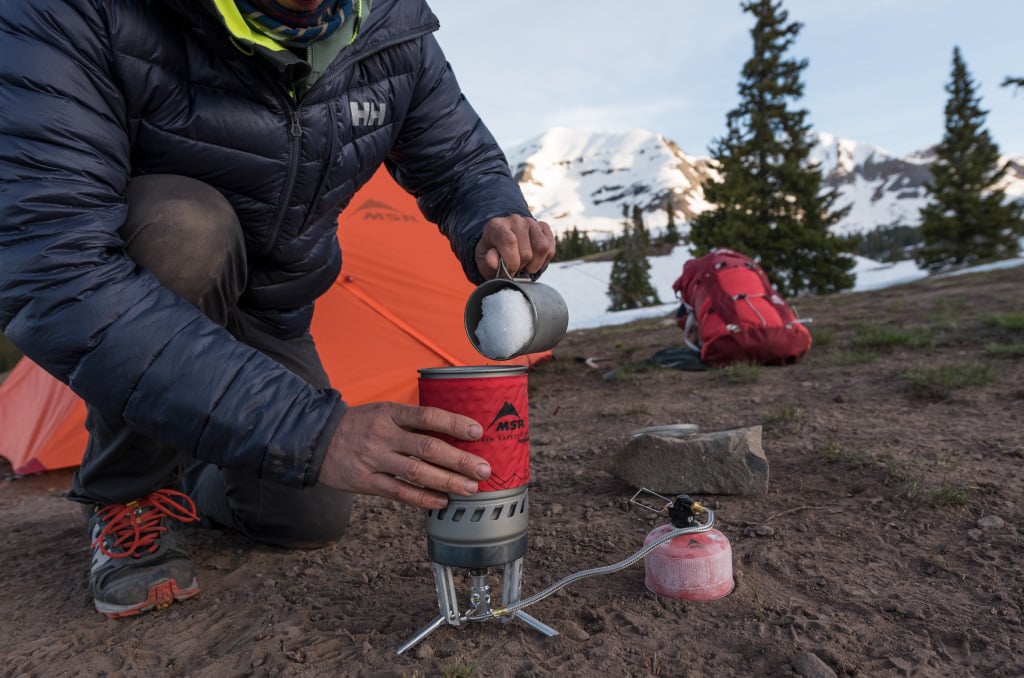
How much MSR fuel do I need?
Whether you’re burning canister fuel or liquid fuel, there are simply far too many factors that affect fuel consumption to provide a simple answer to this question. But we can give you some guidelines and solid tips on making the most of the fuel you have.
When planning a trip over multiple days, first figure out how many people you have to cook for and how many liters of hot water you need. Let’s say you want a cup of tea or coffee every morning on a five-day trip, for three people. That’s roughly 180 ounces, or 5.3 liters of hot water (12 ounces x 5 days x 3 people). Do the same for your meals and you’ll come out with a good estimate of your total needs. Now you can use this chart (at the bottom) to figure out a rough idea of how much fuel you’ll need for your specific MSR stove to heat that much water. But remember, ambient temperatures, wind, overboiling, inefficient lighting of your stove, altitude, melting snow for water and countless other variables can really affect those numbers. Over-prepare with extra fuel until experience can better guide you. It’s also a great idea to always bring a portion of your daily calories in a form that can be eaten without cooking, just in case your fuel use estimates are off, you spill fuel, lose/forget a canister, etc.
Keep tabs on your fuel consumption too. For liquid fuel stoves, that’s as easy as looking inside the bottle. If you’re running low on MSR SuperFuel, your best bet is to use/build windscreens or a heat exchanger to boost efficiency and use as little fuel as possible for priming. For canisters, our engineers have developed an incredibly simple float test for MSR fuel canisters to help you gauge what’s left inside:
If you find yourself using more fuel than planned, you can use these great tips to make the most of every drop of canister stove fuel. Some of those tips will also help for liquid fuel stoves as well.
What brands of canister fuels are compatible with my MSR stove?
Every MSR canister stove is engineered and tested from day one with our uniquely formulated IsoPro™ fuel. Because of that, we know our stoves perform at their best with MSR fuel and strongly recommend only using MSR-branded fuel with your stove.
However, we all know that looking for fuel at a hardware store in a random small town on the road demands versatility. Sometimes, you just get what you get. That said, the majority of canisters worldwide (including MSR canisters) use an EN Standard screw mount (EN 417) that will work with your MSR stove (note: this does not include those larger green fuel bottles from a popular camping brand). For best results, find an 80% isobutane/20% propane blend. You may come across other blends, but we cannot make any guarantees about the quality of the fuel or the performance of your stove while using them.
Also be aware that in some more remote areas, you might come across refilled canisters (with unknown contents). Never use a refilled canister. Aside from not being able to verify what exactly the canister was filled with, liquified fuel expands and contracts with temperature (a lot more than you would think). There must be adequate space in the canister to safely allow for this expansion, and there’s no way to measure this with a refilled canister. Refilled canisters also run the risk of having a compromised fuel-sealing gasket that fails to prevent the fuel from leaking out after you remove the stove. Always aim for the most reputable place to refuel, and be very, very careful everywhere else.
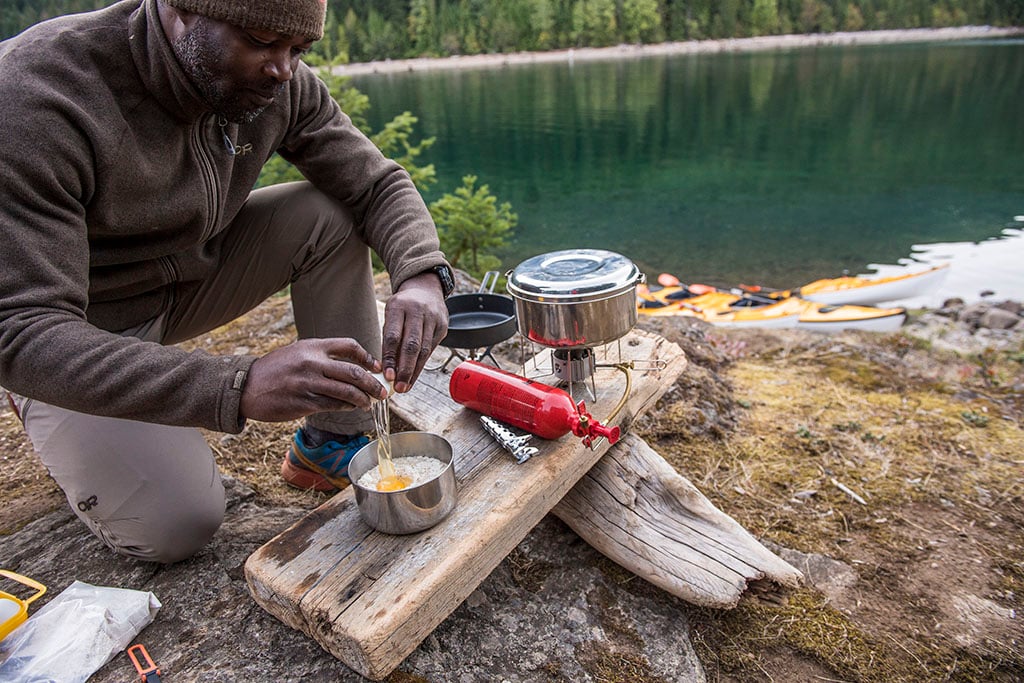
Can I fly with an MSR stove or fuel?
We’ve heard it all, but assuming the TSA agent you’re dealing with got up on the right side of the bed, here are the current guidelines:
Stoves:
You can carry a stove in your carry-on or checked bag if it is completely free of any fuel residues and odors/vapors. This is not a thing to worry about with canister stoves, but liquid fuel stoves should be disassembled, rinsed and dried to remove any fuel (or water being mistaken for fuel) before flying. If you cut corners and it smells like gas, you risk your stove being confiscated.
Fuel:
Canister fuel is a hard stop for air travel but, if you treat your empty liquid fuel bottle as you did your stove (washed, dried and free of significant odors), chances are you’ll make it through. We’ve heard stories of the red paint and warnings on the bottles causing concern to the uninitiated, but you can wrap your clean bottle in paper and tape it if you’d like to reduce those concerns, remembering to remove it before you head out and start using your stove.
Of course, to eliminate any question, you can simply ship your cleaned stove and bottle to a friend or General Delivery postal address at your destination, and not worry about a thing. The fuel itself (liquid or canister) should never be that hard to find in most parts of the world. For more info, you can check out this deeper dive into traveling internationally with your MSR stove.

How do I remove my MSR® fuel bottle cap?
Sometime in the early 2000s, we were required to put a child-resistant cap on our fuel bottles, so we set out to design one. Rather than reinvent the wheel, we stuck with what worked—a simple push-down-and-twist top. Simple, effective and safe, just the way we like it. However, if you prefer the non-child-resistant cap, the classic Expedition Fuel Cap (sold separately) is available as well.
What fuel(s) does my stove use?
MSR stoves last a lifetime—or maybe two or three. That’s why we see a lot of them with new owners and questions about the original specs. With over 50 years of history, this is truly a deep topic worthy of discussion, complicated by the myriad names of common fuel types from region to region. If we had to use a broad brush though, there are essentially three types of stoves that MSR has made over the years: canister fuel, white gas and multi-fuel.
As mentioned above, canister stoves run on any canister with an EN 417 standard thread mount. Always opt for an 80/20 mix of isobutane and propane for optimal performance, but in a pinch, if the canister threads on easily without any undue resistance, you’re good to go. Just be aware that, though rare, some canisters in unregulated environments might have been re-filled with…well, just about anything. Buyer beware.
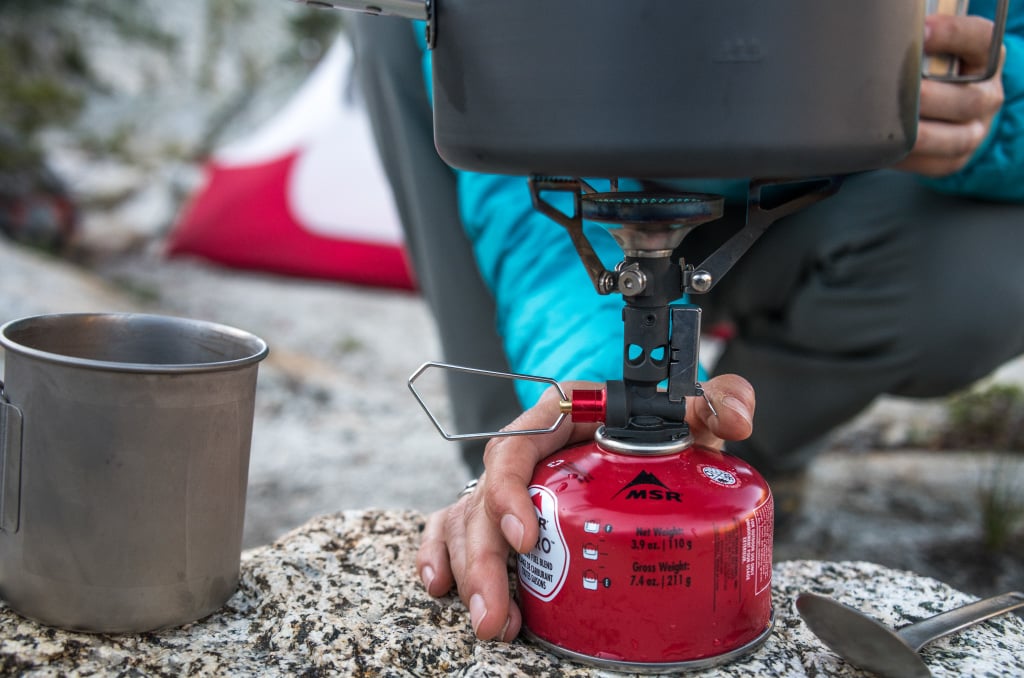
Everything else runs on liquid fuel—either exclusively white gas or “multi-fuel” stoves that are engineered to run on anything from clean white gas camp fuel to alcohol and diesel fuel. To help boil that down (pun intended), check out these tips on finding fuel internationally. It includes a handy chart to make sure that you’re using the proper terms for each type of fuel by region. If you have any uncertainty about your stove, just ask us and we’ll be happy to help identify it.
Armed with all of this information, you should be prepared to take your MSR stove anywhere you dream of, with the fuel you need, for any type of adventure.
Related Posts:
- The Ins and Outs of Canister Fuels
- Canister Stoves vs. Liquid Fuel Backpacking Stoves
- Find Right Fuel for Your Liquid Fuel Stove
 Jim Meyers survives between road trips by pushing all the buttons at Vertizon Photography and is a recovering copywriter-turned-freelance writer. He’s climbed, skied, backpacked, cycled and fly-fished extensively throughout North America and is selfishly raising two budding adventurers with his wife and Type-2 fun soulmate in Seattle, WA.
Jim Meyers survives between road trips by pushing all the buttons at Vertizon Photography and is a recovering copywriter-turned-freelance writer. He’s climbed, skied, backpacked, cycled and fly-fished extensively throughout North America and is selfishly raising two budding adventurers with his wife and Type-2 fun soulmate in Seattle, WA.
Updated. Originally Published September 1, 2022.

